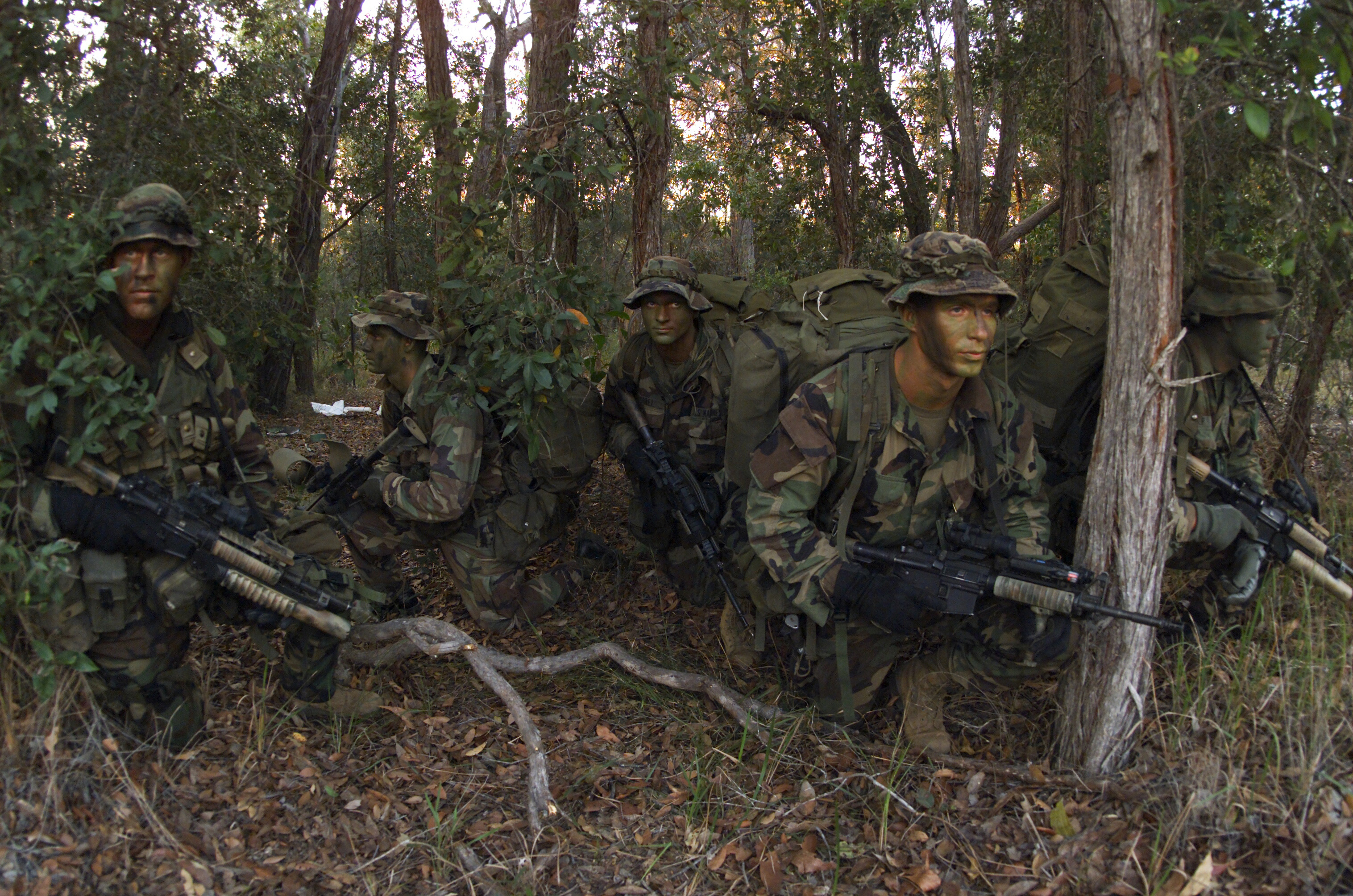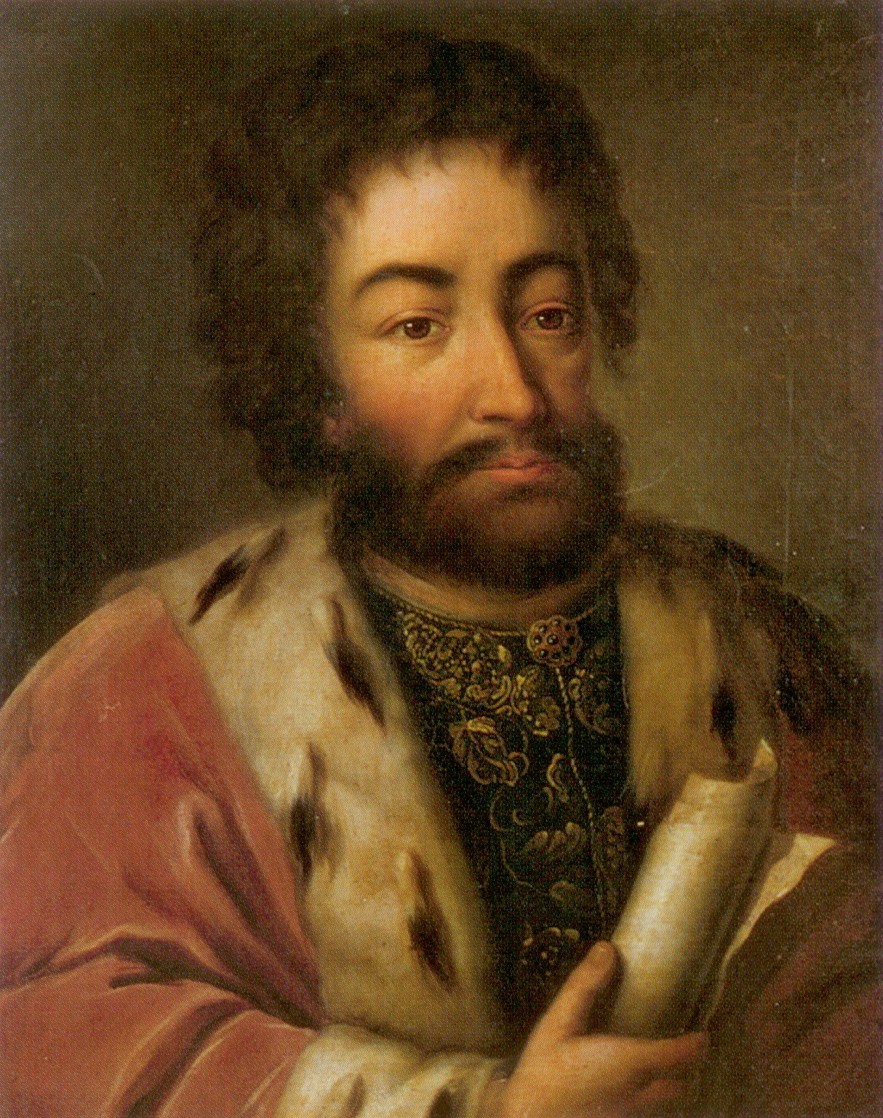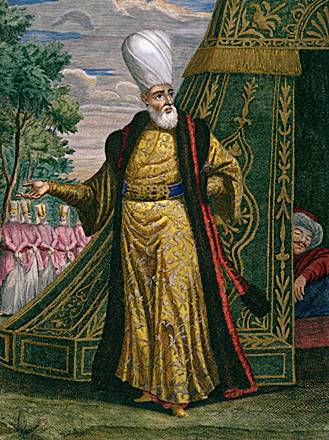|
Battle Of Molodi
The Battle of Molodi (Russian: Би́тва при Мóлодях) was one of the key battles of Ivan the Terrible's reign. It was fought near the village of Molodi, south of Moscow, in July–August 1572 between the 120,000 horde of Devlet I Giray of Crimea and about 60,000–70,000 Russians led by Prince Mikhail Vorotynsky. The Crimeans had burned Moscow the previous year, but this time they were thoroughly defeated. Background While the Tsardom of Russia was involved in the Livonian War, the Crimean khan hoped to make profit from the weakness of its southern borders. In the course of three expeditions, Devlet I Giray devastated South Russia and even sacked and set Moscow on fire in 1571. On 26 July 1572 the huge horde of the khan, equipped with cannons and reinforced by janissaries, crossed the Oka River near Serpukhov, decimated the Russian vanguard of 200 men, and advanced towards Moscow in order to pillage it once again. Little did they know, however, that the Russ ... [...More Info...] [...Related Items...] OR: [Wikipedia] [Google] [Baidu] |
Russo-Crimean Wars
The Russo-Crimean Wars were fought between the forces of the Tsardom of Russia and the Crimean Khanate during the 16th century over the region around the Volga River. In the 16th century, the Wild Steppes in Russia were exposed to the Khanate. During the wars, the Crimean Khanate (supported by the Ottoman army) invaded central Russia, devastated Ryazan, and burned Moscow. However, the next year they were defeated in the Battle of Molodi. Despite the defeat, the raids continued. As a result, the Crimean Khanate was invaded several times, and conquered in the late 18th century. The Tatars eventually lost their influence in the regions. The raids began shortly after the establishment of the Russian buffer state, Qasim Khanate, and the domination of Russia in the Russo-Kazan Wars of the late 15th century. History The Crimean invasions of Russia began in 1507, after the death of Moscow's grand duke Ivan III, with the Crimean Khanate attacking the Russian towns of Belev a ... [...More Info...] [...Related Items...] OR: [Wikipedia] [Google] [Baidu] |
Orda (organization)
An orda (also ordu, ordo, or ordon) or horde was a historical sociopolitical and military structure found on the Eurasian Steppe, usually associated with the Turkic and Mongol peoples. This form of entity can be seen as the regional equivalent of a clan or a tribe of nomads. Some successful ordas gave rise to khanates. The original term did not carry the meaning of a large khanate such as the Golden Horde. These structures were contemporarily referred to as ''ulus'' ("nation" or "tribe"). Etymology Etymologically, the word ''ordu'' ultimately comes from the Turkic ''ordu'' which means "army" in Turkic and Mongolian languages, as well as "seat of power" or "royal court". In English, it was directly or indirectly borrowed from Latin ''orda'', or from Polish ''horda''. Within the Liao Empire of the Khitans, the word ordo was used to refer to a nobleman's personal entourage or court, which included servants, retainers, and bodyguards. Emperors, empresses, and high ranking ... [...More Info...] [...Related Items...] OR: [Wikipedia] [Google] [Baidu] |
Archery
Archery is the sport, practice, or skill of using a Bow and arrow, bow to shooting, shoot arrows.Paterson ''Encyclopaedia of Archery'' p. 17 The word comes from the Latin ''arcus'', meaning bow. Historically, archery has been used for hunting and combat. In modern times, it is mainly a competitive sport and recreational activity. A person who practices archery is typically called an archer, bowman, or toxophilite. History Origins and ancient archery The oldest known evidence of arrows (not found with surviving bows) comes from South Africa, South African sites such as Sibudu Cave, where the remains of bone and stone arrowheads have been found dating approximately 72,000 to 60,000 years ago.Backwell L, d'Errico F, Wadley L.(2008). Middle Stone Age bone tools from the Howiesons Poort layers, Sibudu Cave, South Africa. Journal of Archaeological Science, 35:1566–1580. Backwell L, Bradfield J, Carlson KJ, Jashashvili T, Wadley L, d'Errico F.(2018). The antiquity of bow-and-arro ... [...More Info...] [...Related Items...] OR: [Wikipedia] [Google] [Baidu] |
Reconnaissance
In military operations, military reconnaissance () or scouting is the exploration of an area by military forces to obtain information about enemy forces, the terrain, and civil activities in the area of operations. In military jargon, reconnaissance is abbreviated to ''recce'' (in British, Canadian, Australian English) and to ''recon'' (in American English), both derived from the root word ''reconnoitre'' / ''reconnoitering''. The types of reconnaissance include patrolling the local area of operations and long-range reconnaissance patrols, which are tasks usually realized in the United States of America by U.S. Army Rangers, cavalry scouts, and military intelligence specialists, using navy ships and submarines, Aerial reconnaissance, reconnaissance aircraft, satellites to collect raw intelligence; and establishing observation posts. Moreover, espionage is different from reconnaissance, because spies work as civilians in enemy territory. Etymology The word is derived from the ... [...More Info...] [...Related Items...] OR: [Wikipedia] [Google] [Baidu] |
Lopasnya River
The Lopasnya () is a river in Moscow Oblast in Russia. It is a left tributary of the Oka. It is 108 km in length, with a drainage basin A drainage basin is an area of land in which all flowing surface water converges to a single point, such as a river mouth, or flows into another body of water, such as a lake or ocean. A basin is separated from adjacent basins by a perimeter, ... of 1090 km².«Река ЛОПАСНЯ» Russian State Water Registry Its average discharge is 6,76 m³/s. References Rivers of Moscow Oblast {{Russia-river-stub ...[...More Info...] [...Related Items...] OR: [Wikipedia] [Google] [Baidu] |
Odoyevsky Family
The House of Odoyev (, ) was a branch of the Olgovichi princely family descended from Michael of Chernigov via the sovereign princes of Odoyev and Novosil. Their ancestors were the Upper Oka sovereigns who ruled the tiny Principality of Odoyev until 1494. In the following decade the family was absorbed into the ranks of Muscovite boyars. The Odoyevsky family died out in the mid-19th century. The family was listed in the 5th part ('titled nobility') of the dvoryanstvo registers of the Moscow and Vladimir regions.Федорченко В. Дворянские роды, прославившие Отечество. Энциклопедия дворянских родов. ОЛМА Медиа Групп, 2003. History The princely House of Odoyev dates from 1376, when Prince Roman Semyonovich of Novosil moved his seat from Novosil (in the present-day Oryol Oblast) to Odoyev (in the present-day Tula Oblast) after Mamai's Tatars destroyed the town of Novosil in 1375. According ... [...More Info...] [...Related Items...] OR: [Wikipedia] [Google] [Baidu] |
Repnin
The House of Repnin (), is an ancient Russian princely family, claiming descent from the Olgovichi branch of Rurik dynasty. They held the hereditary title of Knyaz in the Empire of Russia. History The family traces its name to Prince Ivan Mikhailovich Obolensky (+1523), nicknamed ''Repnya'', i.e., "bad porridge". Like other Princes Obolensky, he descended from Mikhail Vsevolodovich, prince of Chernigov, who, in 1246, was assassinated by the Mongols. Notable members *Princess was the first wife of future tsar Vasily Shuisky. The date of marriage is unknown, although they are mentioned together in 1580 as the witnesses in the description of Ivan IV's wedding with Maria Nagaya. She had no children and died possibly in 1592, hypothetically - as the divorced woman in the monastery. The information about her is quite poor.Репнин М. И. Князья Репнины в истории Отечества. М.2009. С.44 Her grave is unknown. In 1608 Vasily took his 2nd wife M ... [...More Info...] [...Related Items...] OR: [Wikipedia] [Google] [Baidu] |
Serpukhov
Serpukhov ( rus, Серпухов, p=ˈsʲerpʊxəf) is a types of inhabited localities in Russia, city in Moscow Oblast, Russia, located at the confluence of the Oka River, Oka and the Nara (Oka), Nara Rivers, 99 kilometers (62 miles) south from Moscow and 72 kilometers (45 miles) from Moscow Ring Road on the Moscow—Simferopol highway. The Moscow—Tula, Russia, Tula railway passes through Serpukhov. Serpukhov is at the centre of the Serpukhov Urban District which in turn lies at the heart of the with a population of more than 260,000 inhabitants. In the 14th and early 15th centuries, Serpukhov was the capital of the principality. It was allocated to an independent administrative and economic unit with direct subordination to the executive committee of the regional council on September 14, 1939. Now a city of regional subordination, it is part of the municipality of the city district of Serpukhov. In the modern era, Serpukhov became a local industrial center with textile, m ... [...More Info...] [...Related Items...] OR: [Wikipedia] [Google] [Baidu] |
Oka River
The Oka (, ; ) is a river in central Russia, the largest right tributary of the Volga. It flows through the regions of Oryol, Tula, Kaluga, Moscow, Ryazan, Vladimir and Nizhny Novgorod and is navigable over a large part of its total length, as far upstream as the town of Kaluga. Its length is and its catchment area .«Река Ока» Russian State Water Registry The Russian capital sits on one of the Oka's tributaries—the Moskva, from which the capital's name is thought to be derived. Name and history The Oka river was the homeland of the Easter ...[...More Info...] [...Related Items...] OR: [Wikipedia] [Google] [Baidu] |
Janissaries
A janissary (, , ) was a member of the elite infantry units that formed the Ottoman sultan's household troops. They were the first modern standing army, and perhaps the first infantry force in the world to be equipped with firearms, adopted during the reign of Murad II (r. 1421–1444, 1446–1451). The corps was established under either Orhan or Murad I, and dismantled by Mahmud II in 1826. Janissaries began as elite corps made up through the '' devşirme'' system of child levy enslavement, by which indigenous European Christian boys, chiefly from the Balkans, were taken, levied, subjected to forced circumcision and forced conversion to Islam, and incorporated into the Ottoman army. They became famed for internal cohesion cemented by strict discipline and order. Unlike typical slaves, they were paid regular salaries. Forbidden to marry before the age of 40 or engage in trade, their complete loyalty to the Ottoman sultan was expected. By the 17th century, due to a drama ... [...More Info...] [...Related Items...] OR: [Wikipedia] [Google] [Baidu] |
Fire Of Moscow (1571)
The Fire of Moscow occurred on 24 May 1571, when the Crimean and Ottoman army ( 40,000 Tatar horsemen, 13,000 irregular Turks and 7,000 janissaries)Пенской В. В. "Сражение при Молодях 28 июля – 3 августа 1572 г." // ''История военного дела: исследования и источники''. — St. Petersburg, 2012. — Vol. 2. — P. 156. — . led by the khan of Crimea Devlet I Giray, bypassed the Serpukhov defensive fortifications on the Oka River, crossed the Ugra River into the Moscow suburbs, and rounded the flank of the 36,000–40,000 men of the Russian army. Wars involving the Circassians Prelude The sentry troops of Russians were crushed by the Crimean and Ottoman forces. Not having forces to stop the invasion, the Russian army retreated to Moscow. The rural Russian population also fled to the capital. After defeating the Russian army, the Crimean forces besieged the town of Moscow, because in 1556 and 15 ... [...More Info...] [...Related Items...] OR: [Wikipedia] [Google] [Baidu] |
Livonian War
The Livonian War (1558–1583) concerned control of Terra Mariana, Old Livonia (in the territory of present-day Estonia and Latvia). The Tsardom of Russia faced a varying coalition of the Denmark–Norway, Dano-Norwegian Realm, the Kingdom of Sweden (1523–1611), Kingdom of Sweden, and the Polish–Lithuanian union, Union (later Polish–Lithuanian Commonwealth, Commonwealth) of the Grand Duchy of Lithuania and the Kingdom of Poland (1385–1569), Kingdom of Poland. From 1558 to 1578, Russia dominated the region with early military successes at Tartu, Dorpat (Tartu) and Narva. The Russian dissolution of the Livonian Confederation brought Poland–Lithuania into the conflict, and Sweden and Denmark-Norway intervened between 1559 and 1561. Swedish Estonia was established despite constant invasion from Russia, and Frederick II of Denmark, Frederick II of Denmark-Norway bought the old Bishopric of Ösel–Wiek, which he placed under the control of his brother Magnus of Holstein ... [...More Info...] [...Related Items...] OR: [Wikipedia] [Google] [Baidu] |





